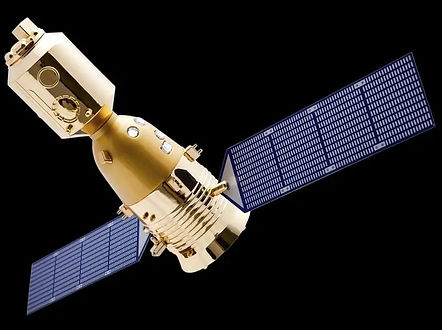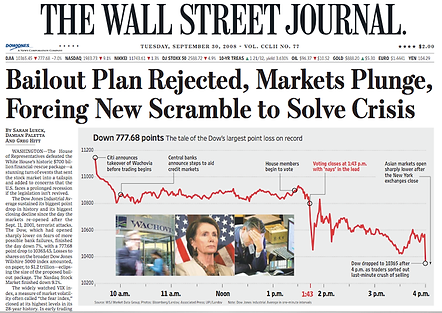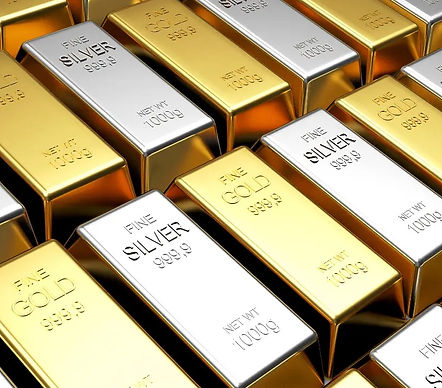
ABOUT THE PROJECT
ABOUT THESEUS
The Theseus Project was the culmination of an obsession, stretching back more than 10 years. It began with a simple question: "Can the Gold and Silver markets be beaten?" As a child, I was always fascinated with how the world worked and wondering why things were the way they were. When I grew up, this general curiosity led me into a career in Information Systems Design, and allowed me to help build complex systems at Brown & Root, CSC, PCL, British Aerospace and Scotland Yard. My interest in investing and world equity markets took a lot longer to develop. Throughout the early 2000s, I started noticing the steady and relentless increase in the price of Gold. Year after year it climbed, and I became increasingly fascinated by this shiny metal, and its little sister, Silver.
I studied the history of precious metals and learned about their rarity and how hard they are to mine. I discovered how chemically stable they are, and how gold doesn’t tarnish or corrode, even over hundreds of years. That’s why both gold and silver still have vital applications in electronics, aerospace, solar panels, medical technology, chemical production and the automotive industry.


Perhaps most importantly, both gold and silver had been regarded throughout history as a vital store of value and a safe haven during times of economic turmoil when government fiat currencies imploded and inflation became rampant. In March 2008, gold finally touched the landmark figure of $1,000 per ounce, meaning it had almost quadrupled in value since I started watching it some 7 years earlier. Yet, in all of that time I hadn’t bought a single ounce.
As the global financial crisis took hold that year, we witnessed the potential collapse of the world financial system. Major financial institutions, including Lehman Brothers, Bear Stearns, and AIG, faced severe liquidity crises and massive losses due to their exposure to subprime mortgages and related securities. Governments around the world intervened with massive bailout packages to stabilise banks and financial institutions. In the U.S., the Troubled Asset Relief Program (TARP) provided $700 billion to purchase distressed assets and inject capital into banks. Global stock markets plummeted as investor confidence eroded, wiping out trillions of dollars in wealth. Central banks, including the Federal Reserve, cut interest rates to near zero and implemented unconventional monetary policies like quantitative easing to stimulate the economy


As stock markets crashed and lost half their value in a year, gold and silver also fell, though by much less. By early 2009, Gold had regained most of its losses and appeared to be well on its way back to the $1000 mark. With so much financial uncertainty, it looked like an excellent investment to me and I finally started to buy. I started buying 1-ounce Canadian Gold Maple Leaf coins and progressed from there. Compared with a price of almost $1,000 an ounce for gold, silver looked stunningly cheap at around $10 or $11 an ounce, and I started to buy 1,000 ounce bars, weighing over 60 pounds. I continued buying, as funds allowed, through 2009 and 2010. By early 2011, Silver hit $48 an ounce, four times the price I had first paid. By September, gold had almost doubled in price, but silver had started to fall back. I didn’t sell any, and as 2011 turned into 2012, the price of both continued to fall. I sold some over the next few years and then liquidated the remainder in 2016, having watched much of those stupendous profits evaporate.
I went through the typical stages of denial and anger before finally coming to acceptance. In some ways, it had been a potentially life-changing experience. I had hit upon the incredible potential of the gold and silver markets, and how massively profitable they can be in turbulent times. And yet my understanding of what drove prices in those markets was limited. I had been drawn to them for purely fundamental reasons without perceiving the complex technical reasons that move prices in these markets, through repeated cycles over time. I vowed that one day I would have the means and the technology to definitively answer the question: “Can the gold and silver markets be beaten?” Since posing that question in 2016, advances in cloud computing and multi-core technology allowed the processing and analysis of vast amounts of data at speeds 5 times greater than would have been possible even then. Detailed research work for the Theseus Project began in 2020, and design, testing and data discovery in 2021. Proof of Concept was finally released in August 2024.
WHY THESEUS?
The ancient myth of Theseus and the Minotaur dates back more than 3,000 years to the Mycenaeans in Greece and the Minoan civilisation on Crete. As Joseph Campbell taught, myths are not just silly stories but vital expressions of human consciousness, reflecting our deepest fears, aspirations, and quests for meaning. That’s why the same themes crop up in myths from all cultures - because they’re central to the human condition. While working on this project, I noticed similarities between themes in ancient myths and universal patterns that recurred in financial markets throughout history. I believe this is because they’re both expressions of human consciousness, with bull markets representing periods of ambition, aspiration and expansion, followed by bear markets representing periods of apathy, contraction and fear. In some versions of the Theseus myth, the thread that Ariadne gives Theseus to help him navigate the Labyrinth is described as a golden thread. This thread is crucial in allowing Theseus to find his way back after slaying the Minotaur. We are facing exceptionally turbulent economic and political times ahead. Against this backdrop, the gold and silver markets can offer potentially life-changing rewards in the next few years, while posing significant challenges along the way. It’s my hope that the insights gained from The Theseus Project will eventually help many people to profit from them. Rick Adams

